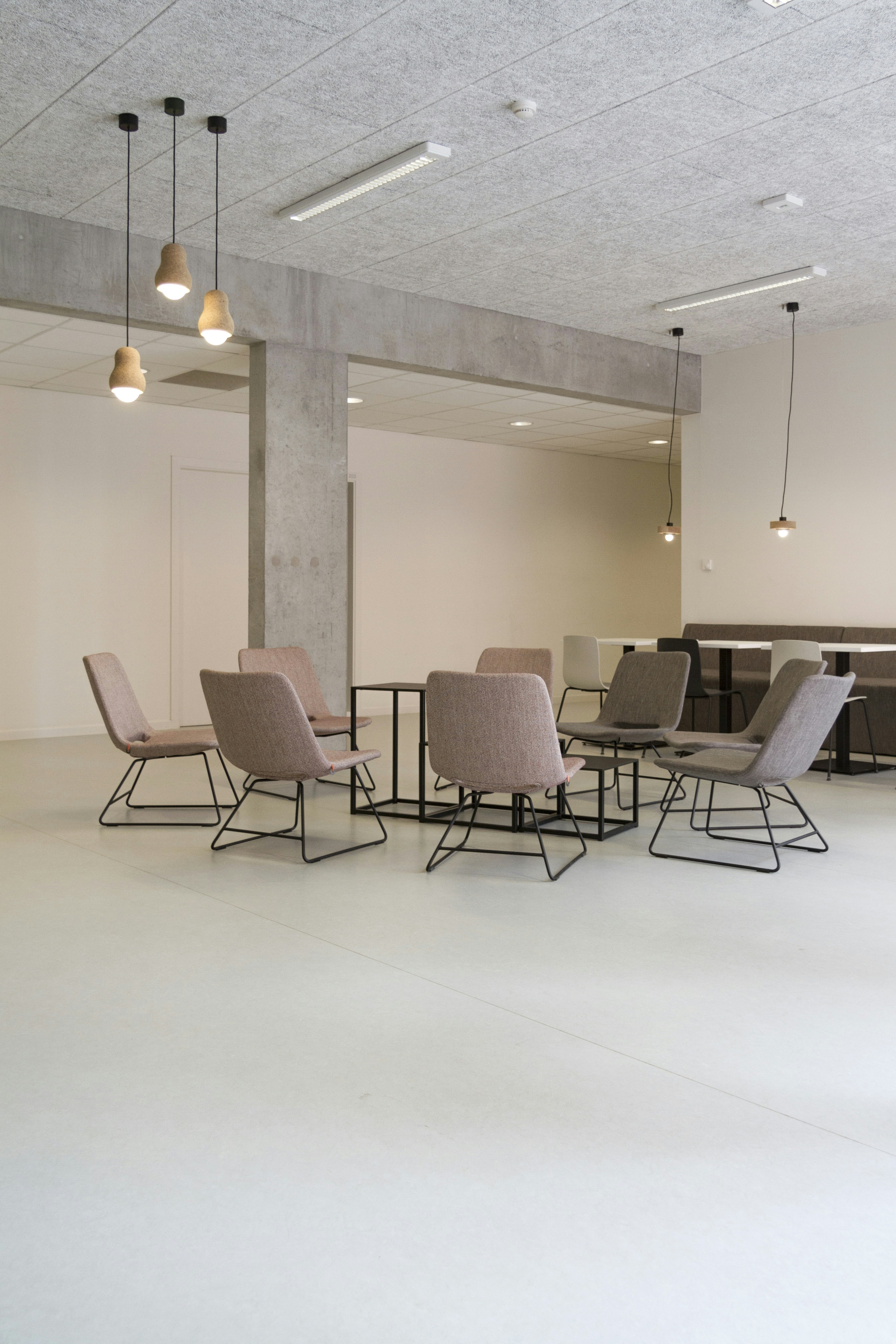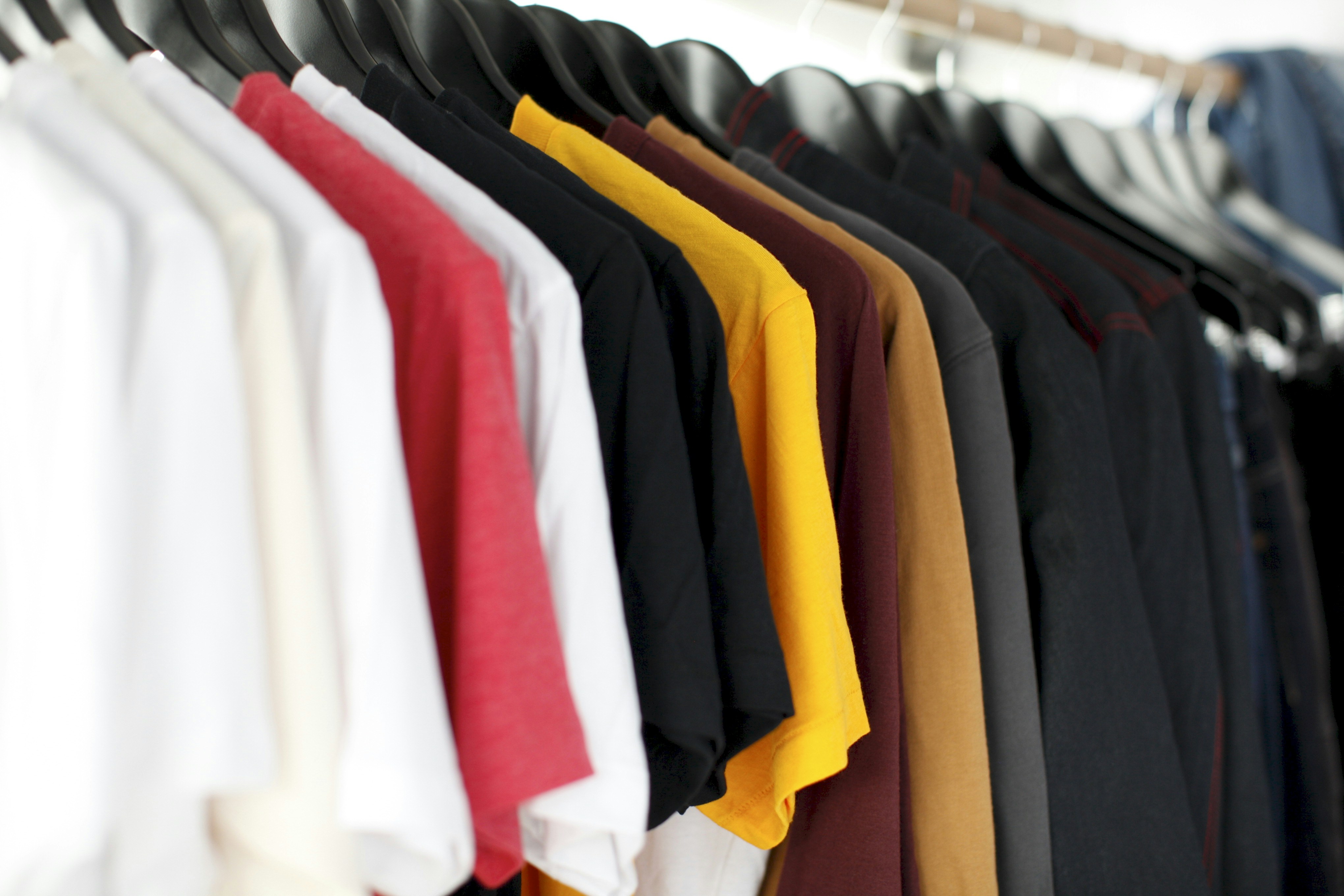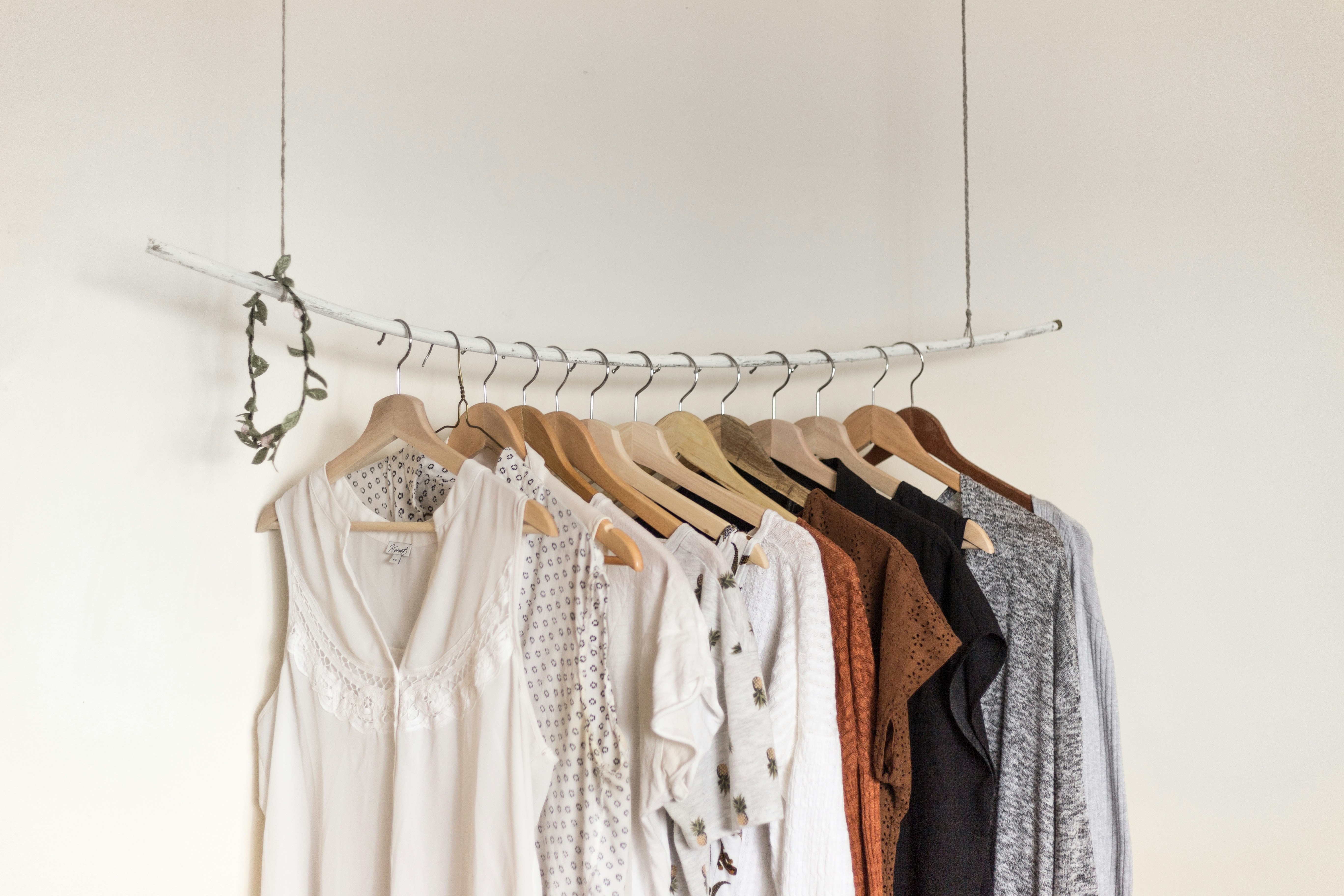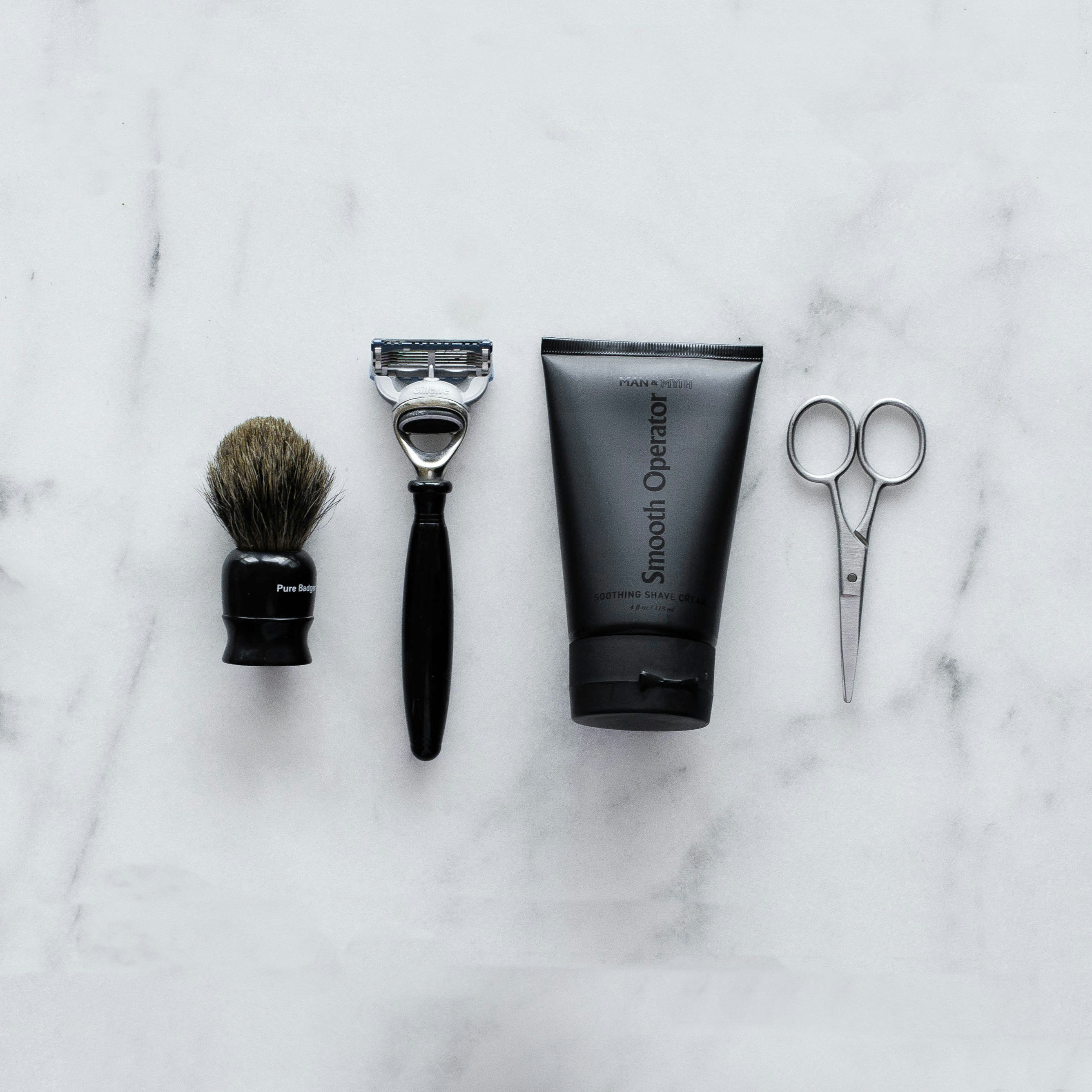Minimalist Fashion Guide: Simplifying Your Style
Malik Mohsin Saleem Khan
August 10, 2023 · 14 min read

Introduction
Minimalist fashion represents more than just a style aesthetic—it embodies a thoughtful approach to dressing that prioritizes quality over quantity, timelessness over trends, and intentionality over impulse. In a world of fast fashion and constant consumption, minimalism offers a refreshing alternative that simplifies daily decisions while creating a more cohesive, versatile, and sustainable wardrobe.
This comprehensive guide explores the principles, practices, and benefits of minimalist fashion, providing practical strategies for curating a streamlined wardrobe that aligns with your lifestyle, values, and personal style. Whether you're seeking to reduce decision fatigue, minimize environmental impact, or simply achieve a more refined aesthetic, embracing minimalist fashion principles can transform not just your closet but your relationship with clothing itself.
The Philosophy and Evolution of Minimalist Fashion
Minimalist fashion draws inspiration from broader minimalist philosophy—the intentional promotion of things we most value by removing everything that distracts from them. Applied to clothing, this approach emphasizes quality, functionality, and thoughtful curation rather than accumulation. While often associated with specific aesthetic elements like neutral colors and clean lines, true minimalist fashion is defined more by this underlying philosophy than by rigid style rules.
The modern minimalist fashion movement has diverse historical roots. It draws from Japanese concepts like "ma" (the appreciation of negative space) and functional German design principles from the Bauhaus school. In fashion specifically, designers like Coco Chanel pioneered minimalist elements through her focus on simplified silhouettes that liberated women from restrictive garments. Later, designers including Calvin Klein, Jil Sander, and Helmut Lang further developed minimalist fashion language in the 1990s, creating the foundation for contemporary interpretations.
Recent years have seen minimalist fashion evolve beyond its stereotype of austere, colorless wardrobes. Today's approach often embraces "warm minimalism" that incorporates personal expression, thoughtful color, and individual style while maintaining the core principles of intentionality and restraint. This evolution reflects growing recognition that minimalism isn't about deprivation but about making space for what truly matters—a principle that can be applied regardless of personal aesthetic preferences.
Several cultural factors have accelerated interest in minimalist fashion:
- Growing awareness of fashion's environmental impact has prompted reconsideration of consumption patterns
- Research on decision fatigue has highlighted the cognitive benefits of simplified choice architecture
- Economic factors including housing costs have created practical need for more compact wardrobes
- Social media has simultaneously fueled both consumption pressure and the minimalist response
These converging influences have transformed minimalist fashion from a niche aesthetic choice to a meaningful lifestyle approach embraced by diverse individuals seeking more intentional relationships with their possessions and appearance.
Core Principles of Minimalist Wardrobe Building
Creating a successful minimalist wardrobe requires understanding and applying several fundamental principles that guide both curation and acquisition decisions. These principles provide a framework for developing a personalized approach to minimalist fashion that aligns with your unique needs and preferences.
Quality over quantity forms the foundation of minimalist wardrobe building. Rather than accumulating numerous inexpensive items, minimalist fashion prioritizes fewer, better-made pieces that offer superior materials, construction, and longevity. According to a 2020 study in the International Journal of Fashion Design, consumers who invested in higher-quality clothing reported greater satisfaction and longer wear times, supporting this principle empirically.
When evaluating quality, examine:
- Fabric composition and weight
- Seam construction and finishing
- Hardware durability
- Overall craftsmanship
"The best things are not things at all—they're well-designed solutions to genuine needs." — Fumio Sasaki, minimalist author
Versatility and cohesion enable a small wardrobe to meet diverse needs. Each item in a minimalist wardrobe should serve multiple purposes and combine easily with other pieces. This interchangeability creates what designers call a "capsule wardrobe"—a limited collection of complementary items that can be mixed and matched to create numerous outfits.
To maximize versatility:
- Select a cohesive color palette where most items coordinate
- Choose silhouettes and styles that work across different contexts
- Focus on layering pieces that transition between seasons
- Prioritize items that can be dressed up or down with accessories
Timelessness over trends ensures longevity beyond seasonal fashion cycles. While minimalism doesn't require avoiding all trends, it emphasizes classic designs that maintain relevance year after year. This approach not only extends the useful life of garments but reduces the psychological pressure to constantly update one's wardrobe.
Elements that contribute to timelessness include:
- Classic silhouettes with proven longevity
- Neutral or subdued colors that don't quickly date
- Simple patterns or textures rather than distinctive trend-driven prints
- Moderate proportions rather than exaggerated dimensions
Intentionality and mindfulness transform minimalist fashion from mere aesthetic choice to meaningful practice. Each addition to a minimalist wardrobe should result from careful consideration rather than impulse. This deliberate approach creates a collection that genuinely reflects your needs, values, and personal style rather than responding to external pressures or momentary desires.
Practices that support intentionality include:
- Implementing waiting periods before purchases
- Considering cost-per-wear for potential acquisitions
- Regularly reassessing your wardrobe's alignment with your lifestyle
- Developing awareness of emotional triggers for unnecessary purchases
These core principles provide the foundation for minimalist wardrobe building, though their specific application varies based on individual circumstances, preferences, and needs. The most successful minimalist wardrobes reflect thoughtful personalization of these principles rather than rigid adherence to external rules.
Essential Pieces: Building Blocks of a Minimalist Wardrobe
While minimalist wardrobes should be personalized to individual lifestyles and preferences, certain versatile pieces consistently prove valuable across different contexts. These foundational items create the framework for a functional minimalist wardrobe, offering maximum versatility with minimum redundancy.
For a comprehensive minimalist wardrobe, consider these essential categories and their key pieces:
Outerwear represents one of the most visible and functional wardrobe components. Quality outerwear pieces justify investment through frequent use and significant impact on both comfort and appearance. Essential minimalist outerwear typically includes:
- A tailored wool coat in a neutral color for professional and formal occasions
- A versatile trench coat that functions across seasons and dress levels
- A lightweight jacket (denim, utility, or leather depending on personal style) for casual settings
- A technical raincoat or shell for practical weather protection
These four pieces can address most climate and context needs while maintaining style coherence. The specific selection should reflect your local climate, with appropriate adjustments for extreme conditions.
Tops form the foundation of daily outfits and benefit from particular attention to quality and fit. A minimalist top collection typically includes:
- Well-made t-shirts (5-7) in neutral colors and preferred necklines
- Button-down shirts (3-5) in white, light blue, and perhaps one pattern
- Knitwear (3-5) including lightweight and heavier options for layering
- At least one elevated blouse or top for dressier occasions
The exact composition depends on your lifestyle balance between formal and casual environments. Those in creative fields might emphasize interesting knitwear, while corporate environments might require more structured shirts.
Bottoms should balance versatility with appropriate options for different contexts. A well-rounded minimalist bottom collection includes:
- Well-fitting jeans (2-3 pairs) in dark and medium washes
- Tailored trousers (2-3 pairs) in neutral colors
- A versatile skirt or dress pants for formal occasions
- Casual alternatives like chinos or relaxed pants for weekend wear
Focus on silhouettes that flatter your body type and can transition between settings with simple styling changes. Quality construction is particularly important for bottoms, which typically experience more wear stress than other garments.
Dresses and one-piece items offer simplified dressing while creating put-together looks. Even minimalist wardrobes benefit from:
- A casual day dress or jumpsuit for effortless everyday wear
- A versatile dress that can be styled for professional or social occasions
- One special occasion option appropriate for formal events
Footwear significantly impacts both comfort and style coherence. A minimalist shoe collection typically includes:
- Everyday comfortable shoes (sneakers or flats) for casual wear
- Professional footwear (loafers, oxfords, or heels depending on preference)
- Boots for inclement weather and seasonal transition
- Athletic shoes designed for your specific activities
- One pair of formal shoes for special occasions
Quality footwear represents one of the most important minimalist investments, as it directly affects physical wellbeing while experiencing significant wear. Prioritize construction quality and repairability over quantity.
These essential categories provide structure for a minimalist wardrobe, though the specific items should be customized to your climate, lifestyle, and personal aesthetic. The goal isn't rigid adherence to a universal list but thoughtful curation of pieces that work together to meet your particular needs with minimal redundancy.
Developing Personal Style Within Minimalism
Contrary to common misconceptions, minimalist fashion doesn't require sacrificing personal style or adopting a uniform aesthetic. Rather, it provides a framework for more intentional style expression by removing distractions and focusing on elements that genuinely resonate with your identity and preferences. Developing a distinctive personal style within minimalist parameters creates a wardrobe that feels both cohesive and authentically expressive.
The first step in developing minimalist personal style is identifying your style foundation—the aesthetic elements that consistently appeal to you across trends and seasons. This foundation typically combines:
- Silhouettes that you find flattering and comfortable
- Colors that complement your complexion and resonate emotionally
- Textures that you're drawn to consistently
- Design details that catch your attention repeatedly
To identify these elements, analyze items you wear frequently and with confidence. What common characteristics do they share? Similarly, examine pieces that remain unworn despite initial attraction. What patterns emerge in these less successful purchases? This analysis reveals your authentic preferences beyond momentary trend influences.
Aja Barber, sustainable fashion advocate, suggests creating a "style mood board" collecting images that consistently appeal to you over several months. "The patterns that emerge reveal your true style preferences rather than fleeting attractions," she notes. This exercise helps distinguish between enduring personal style and temporary trend influence.
"Style is knowing who you are, what you want to say, and not giving a damn." — Gore Vidal
Once you've identified your style foundation, create a personalized color palette that supports both versatility and personal expression. Minimalist color strategies typically include:
- Core neutrals (2-3 colors) that form the foundation of your wardrobe
- Complementary neutrals (2-3 colors) that expand combination possibilities
- Accent colors (1-3 colors) that add personality and visual interest
This approach creates cohesion while allowing for personal expression. Your specific palette should reflect both practical considerations (versatility, appropriateness for your lifestyle) and personal preferences (colors you genuinely enjoy wearing).
To maintain individuality within minimalist constraints, incorporate distinctive elements strategically. Rather than relying on constant novelty, identify specific ways to express uniqueness:
- Signature accessories that reflect your personality
- Distinctive silhouettes that you consistently prefer
- Thoughtful details like interesting textures or subtle patterns
- Quality statement pieces that express your aesthetic clearly
This focused approach to personal expression creates more impact than scattered trend-following while maintaining minimalist principles.
Finally, evolve your style intentionally rather than reactively. Minimalism doesn't require static style—it simply encourages thoughtful evolution rather than constant reinvention. When considering style shifts:
- Distinguish between genuine evolution and momentary trend attraction
- Implement changes gradually to ensure they integrate with your existing wardrobe
- Focus on pieces that serve multiple functions within your evolving style
- Consider how potential additions align with your overall aesthetic direction
This balanced approach allows your style to remain dynamic and expressive while maintaining the cohesion and intentionality that define minimalist fashion. The result is a wardrobe that feels simultaneously distinctive and harmonious—expressing your unique identity through thoughtful curation rather than constant consumption.
Transitioning to a Minimalist Wardrobe: Practical Steps
Moving from a conventional wardrobe to a minimalist approach requires thoughtful process rather than abrupt change. This section provides a structured methodology for transitioning to minimalist fashion, addressing both the practical aspects of wardrobe reduction and the psychological adjustments involved.
- Conduct a comprehensive wardrobe assessment: Begin by evaluating your current clothing collection to understand its composition and identify patterns. Remove everything from your closet and examine each piece individually, considering:
- How frequently you wear it
- Whether it fits properly and comfortably
- Its condition and remaining lifespan
- How well it aligns with your lifestyle and preferences
- Its versatility and combination potential with other items
- Implement a thoughtful reduction process: Rather than arbitrary elimination, use a structured approach to wardrobe reduction:
- Create immediate removal, consideration, and keep categories
- For consideration items, implement a trial separation period (typically 1-3 months)
- Document outfits during this period to identify truly essential pieces
- Reassess consideration items after the trial period based on whether you missed them
- Responsibly manage removed items: Approach wardrobe reduction as a responsibility rather than simply discarding unwanted items:
- Sell higher-value pieces through consignment or online platforms
- Donate wearable items to appropriate organizations (researching their actual needs)
- Repurpose damaged textiles through recycling programs
- Consider clothing swaps with friends for items that might better serve others
- Identify and address wardrobe gaps: After reduction, analyze your remaining collection to identify essential items that may be missing:
- Create a list of specific gaps rather than general shopping permission
- Prioritize these items based on immediate need and versatility
- Research quality options that will serve long-term rather than temporary solutions
- Establish a timeline and budget for thoughtful acquisition
- Develop new acquisition habits: Establish protocols for adding items that support minimalist principles:
- Implement a mandatory consideration period (typically 1-4 weeks) before purchases
- Create a set of questions to evaluate potential additions (versatility, quality, necessity)
- Establish a one-in-one-out policy to maintain wardrobe boundaries
- Track clothing expenditures to increase awareness of consumption patterns
Throughout this transition, address the psychological aspects of wardrobe minimalism. Many people experience unexpected emotional responses to wardrobe reduction, including anxiety about potential future needs, attachment to aspirational items, or concern about identity expression. Acknowledge these responses without judgment while returning to your core motivations for embracing minimalist fashion.
Remember that minimalist wardrobe development is an iterative process rather than a one-time project. Most successful minimalists describe their journey as evolving over months or years as they refine their understanding of their needs, preferences, and the appropriate level of reduction for their circumstances. Be willing to adjust your approach based on experience rather than adhering to rigid external standards of what constitutes a "proper" minimalist wardrobe.
Finally, focus on the benefits you experience rather than numerical targets. The goal of minimalist fashion isn't achieving a specific number of items but creating a wardrobe that serves your life with minimal excess and maximum intentionality. Success is measured by reduced decision fatigue, increased satisfaction with your clothing, greater alignment with your values, and a more mindful relationship with consumption—not by reaching an arbitrary threshold of minimalism.
The Evolution of Minimalist Fashion
Minimalist fashion continues to evolve in response to cultural shifts, technological developments, and changing consumer priorities. Understanding these emerging trends provides context for developing a minimalist approach that remains relevant while staying true to core principles of intentionality and reduction.
The integration of sustainability and minimalism represents perhaps the most significant evolution in minimalist fashion. While these philosophies have always shared common ground, they're increasingly viewed as complementary rather than separate approaches. This convergence is creating several notable developments:
- Material innovation is expanding minimalist aesthetics to include more environmentally responsible options. Brands like Veja and Eileen Fisher demonstrate how sustainable materials can maintain minimalist design principles while reducing environmental impact.
- Circular design principles are being incorporated into minimalist fashion, with modular garments, repair-focused construction, and end-of-life considerations becoming more prominent in minimalist collections.
- Transparency in production is increasingly expected by minimalist consumers, who are extending their desire for intentionality to include understanding how and where their clothing is made.
The aesthetic evolution of minimalism is moving beyond the stereotype of austere, colorless wardrobes toward more nuanced expressions. Contemporary minimalist fashion embraces:
- "Warm minimalism" that incorporates natural textures, subtle patterns, and thoughtful color while maintaining simplicity and cohesion
- Cultural influences beyond Western minimalist traditions, drawing inspiration from diverse minimalist aesthetics including Japanese and Scandinavian approaches
- Personalized minimalism that emphasizes individual expression within minimalist frameworks rather than conformity to a single minimalist ideal
"The future of minimalism isn't about less for the sake of less, but about making room for what truly matters—including joy, creativity, and personal expression." — Erin Boyle, author of "Simple Matters"
Technological developments are creating new possibilities for minimalist wardrobes. Innovations including:
- Advanced technical fabrics that offer increased functionality and versatility, allowing fewer garments to meet more diverse needs
- Digital wardrobe management tools that support more intentional curation and usage of existing pieces
- On-demand production models that reduce waste while providing more personalized options
- Rental and sharing platforms that offer access to occasional-use items without ownership
These technologies are enabling more flexible approaches to minimalism that focus on reduced impact and increased intentionality rather than solely on ownership reduction.
The cultural context of minimalist fashion is also evolving as awareness grows about the privilege often embedded in minimalist narratives. Contemporary approaches increasingly acknowledge:
- The economic realities that make quality-focused minimalism inaccessible to many
- The cultural differences in attitudes toward clothing and consumption
- The need for inclusive sizing and design in minimalist offerings
- The importance of adapting minimalist principles to diverse life circumstances
This more nuanced understanding is creating minimalist approaches that emphasize the underlying philosophy of intentionality while adapting specific practices to individual circumstances and values.
As these trends converge, minimalist fashion is becoming less defined by specific aesthetic markers or numerical targets and more by its underlying ethos of thoughtful consumption and personal alignment. This evolution suggests a future where minimalism functions less as a distinct fashion category and more as an approach that can be applied across diverse style preferences and life circumstances.
Conclusion
Minimalist fashion offers a compelling alternative to the constant churn of trends and accumulation that characterizes much of contemporary clothing culture. By focusing on quality, versatility, and intentionality, this approach creates wardrobes that better serve our practical needs while aligning more closely with values of sustainability, mindfulness, and authentic self-expression.
The benefits of embracing minimalist fashion extend far beyond an organized closet. Reduced decision fatigue frees mental energy for more meaningful concerns. Higher-quality, better-fitting garments enhance confidence and comfort. Decreased consumption lessens environmental impact while often improving financial wellbeing. Perhaps most significantly, developing a more intentional relationship with clothing often catalyzes mindfulness in other consumption areas, creating ripple effects throughout one's lifestyle.
As you consider incorporating minimalist principles into your wardrobe, remember that successful minimalism is highly personal. Rather than adhering to rigid external standards or arbitrary numerical goals, focus on finding the level of simplification that genuinely enhances your life. For some, this might mean a carefully curated collection of 30 items; for others, thoughtful organization of a larger wardrobe that serves diverse professional and personal needs.
The essence of minimalist fashion lies not in specific aesthetic choices or wardrobe sizes but in the mindful intentionality it brings to our relationship with clothing. By choosing quality over quantity, needs over wants, and personal style over fleeting trends, we create wardrobes that serve as tools for living well rather than sources of stress or distraction. In a culture that often equates more with better, this deliberate embrace of "enough" represents not deprivation but liberation—creating space for what truly matters in our closets and, by extension, in our lives.
Frequently Asked Questions
How many items should be in a minimalist wardrobe?
There's no universal number that defines a minimalist wardrobe. While some approaches like Project 333 suggest specific limits (33 items for 3 months), authentic minimalism focuses on intentionality rather than arbitrary counts. The appropriate size depends on your climate, lifestyle, professional requirements, and personal preferences. A corporate lawyer in a four-season climate will need more items than a remote worker in a consistent climate. Rather than targeting a specific number, focus on eliminating unnecessary duplication and items that don't serve your actual lifestyle. A thoughtfully curated wardrobe of 80 pieces that all serve clear purposes is more aligned with minimalist principles than 30 items that don't meet your needs.
Can minimalist fashion include color and patterns?
Absolutely. While minimalist fashion is often stereotyped as exclusively black, white, and neutral, true minimalism is about intentionality rather than specific aesthetic choices. Color and pattern can be incorporated thoughtfully into a minimalist wardrobe, particularly when they reflect your authentic preferences and integrate cohesively with other pieces. The key is purposeful selection rather than limitation to certain hues. Many successful minimalists include a carefully chosen color palette that enhances versatility while expressing personal style. Similarly, thoughtfully selected patterns—especially those with personal significance or exceptional versatility—can be valuable additions to a minimalist wardrobe. The goal is meaningful curation, not aesthetic restriction.
How do I build a minimalist wardrobe on a limited budget?
Building a quality minimalist wardrobe doesn't require large immediate investments. Start by thoroughly evaluating what you already own, identifying versatile pieces that serve you well. Focus first on creating functional outfits from existing items before making any purchases. When adding pieces, prioritize true gaps in your wardrobe rather than aspirational items. Consider quality secondhand options through consignment stores, online platforms like ThredUp or Poshmark, or clothing swaps. For new purchases, save for fewer, better items rather than settling for lower-quality alternatives. Implement a gradual transition strategy, replacing items only as they wear out with higher-quality versions. Remember that minimalism ultimately reduces clothing expenditure over time by eliminating impulse purchases and frequent replacements of poor-quality items.
How do I maintain interest in a minimalist wardrobe without shopping frequently?
Maintaining engagement with a minimalist wardrobe involves shifting focus from acquisition to creativity and appreciation. Experiment with new combinations of existing pieces, perhaps using digital tools to document successful outfits. Practice styling variations that create different looks from the same items through layering, accessorizing, or altered wearing methods. Implement seasonal rotations that create refreshed options without new purchases. Develop deeper appreciation for your pieces by learning about their construction, materials, or the brands that created them. When you do feel the desire for novelty, consider temporary refreshes through borrowing, rental services, or carefully selected accessories rather than permanent additions. This approach cultivates creativity and mindfulness while breaking the cycle of seeking newness through constant consumption.
How do I handle special occasion needs in a minimalist wardrobe?
Special occasions present a common challenge for minimalist wardrobes, as these infrequent events often seem to demand specific garments. Several strategies can address this without compromising minimalist principles. First, consider versatile pieces that can be styled differently for special events—a well-chosen dress or suit that works across multiple occasions through accessory changes. Second, explore rental services like Rent the Runway for truly occasional needs like formal events. Third, develop a small collection of high-quality, timeless special occasion pieces that won't quickly date if your lifestyle regularly includes formal events. Fourth, consider borrowing from similarly-sized friends or family for one-time occasions. Finally, some minimalists maintain a separate, small collection of special occasion items that doesn't count toward their everyday wardrobe but serves specific, identified needs.
Malik Mohsin Saleem Khan
Founder
Author bio information


